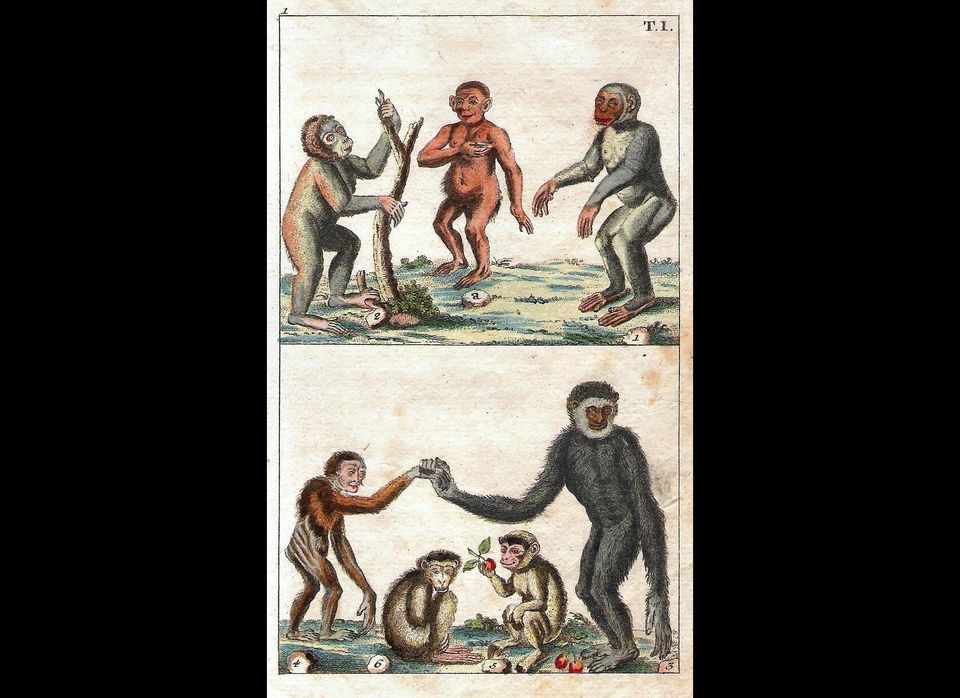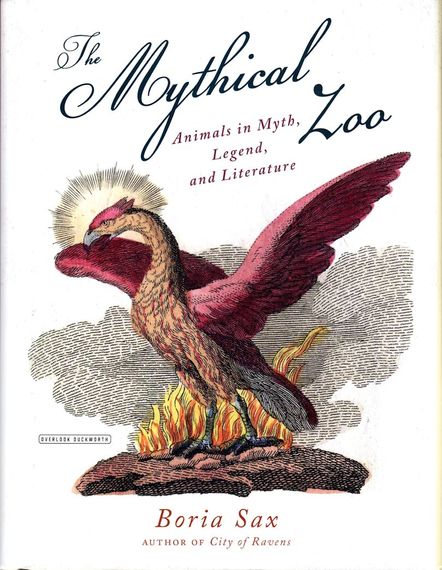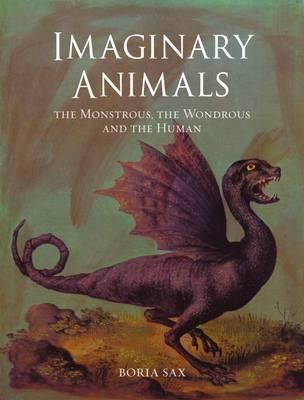The monkey-god Hanuman is beloved in the Hindu pantheon, largely because he is capable of both childish mischief and noble sacrifice. When Hanuman was a child, he looked up, saw the sun and thought it must be a delicious fruit. He jumped to pick it and rose so high that Indira, god of the sky, became angry at the invasion of his domain. Indira hurled a thunderbolt at the intruder, striking Hanuman in the jaw. At this, the father of Hanuman, Vayu, god of winds, became furious, and started a storm that soon threatened to destroy the entire world. Brahma, the supreme god placated Vayu by granting Hanuman invulnerability. Indira then added a promise that Hanuman could choose his own moment of death. Ever since, however, monkeys have swollen jaws. This story, from The Ramayana, an ancient Hindu epic, shows the amusement with which apes have generally been regarded throughout the world. Because Hanuman is a monkey, his divinity does not seem intimidating. In the Hindu Panchantantra and the early Buddhist Jatakas, the ape was one of the more sensible of animals, often a chief advisor to the lion king. People of the Far East regard the playfulness of monkeys and apes as divine serenity, not simple frivolity as in the West.
To find a major simian figure in Western religion, we must go all the way back to Thoth, the baboon-headed god of the ancient Egyptians. Thoth was the scribe to Osiris, ruler of the dead, and inventor of the arts and sciences. Perhaps in those archaic times reading and writing, still novel and full of mystery, appeared more simian than "human." Today, of course, we invoke language, especially writing, to proudly distinguish ourselves from all other creatures.
In the early sixth century BCE, the Carthaginian navigator Hanno led an enormous expedition down the West Coast of Africa. According to his account of the voyage, they sighted a huge mountain called the "chariot of the gods." He and his crew confronted wild men and women covered with hair, which threw stones at them and climbed adroitly up the slopes. Ever since then, people have speculated about whether the "wild men" were people in skins, chimpanzees, baboons or, most likely, gorillas. Similar rumors of wild men have continued to circulate ever since, as mariners in distant lands reported seeing men with the heads of dogs, the feet of goats, their faces on their chests, and many creatures just as strange. Stories of hairy, wild men with clubs were told around the fire and sometimes acted out in medieval pageants.
In Early Modern times, an expansion of maritime trade and exploration took Europeans to exotic corners of the world. Explorers began to discover both the great apes and people of cultures radically different from their own; sorting the former from the latter was not an easy matter. Scientists as well as sailors often conflated orangutans with gorillas and African tribesmen, all of whom were known mostly through fleeting glimpses and rumors. Tribes in West Africa regarded apes as human. Some believed that chimpanzees could speak but chose not to, so that they would not be forced to work. "Orangutan" was initially a Malay word for "wild man." When the Dutch anatomist Nicolaas Tulp dissected a body of an orangutan in 1641, he thought that it was the satyr of classical mythology. A colleague of his, Jacob de Bondt, believed these creatures were "born of the lust of Indonesian women who consort in disgusting lechery with apes."
Explorers in the sixteenth and seventeenth centuries brought tales back to Europe of apes that lived in huts, foraged in trees and fought with cudgels. According to some accounts from the period, apes ravished human females or made war on human towns. The enormously popular History of Animated Nature published by Oliver Goldsmith during the late eighteenth century reported that in Africa sometimes steal men and women to keep as pets. Visitors to Victorian zoos complained that the apes tried to seduce human women. Sometimes apes were even made to put on clothes.
Just as the process of distinguishing apes and men was nearly complete, Darwin developed his Theory of Evolution with The Origin of Species in 1859. Not everyone could understand the book, and some thought that Darwin was either blasphemous or crazy. In a famous debate in 1860, Bishop Wilberforce asked Thomas Huxley whether the ape was on his mother's or his father's side of the family. Huxley replied that rather than be descended from a gifted man who mocks scientific discussion, ". . . I unhesitatingly affirm my preference for the ape." His brilliant rhetoric may have won the day, but wisecracks about apes for grandparents were constantly used in the vitriolic debate about evolution. But even the possibility of kinship made apes appear threatening, and popular writers immediately began to depict them as less human but more dangerous.
For the past several years, I have been collecting pictures of simians from the last few centuries, to show the rapid and dramatic changes that they have undergone. They are colorful and occasionally frightening, and, like most depictions of animals, they usually tell us more about the people than the creatures they wished to show. Here are a few, with some brief notes and commentaries:
(The preceding text is loosely adapted from my book The Mythical Zoo: Animals in Myth, Legend, and Literature. Most, though not all, of the pictures have not been published in recent times.)


